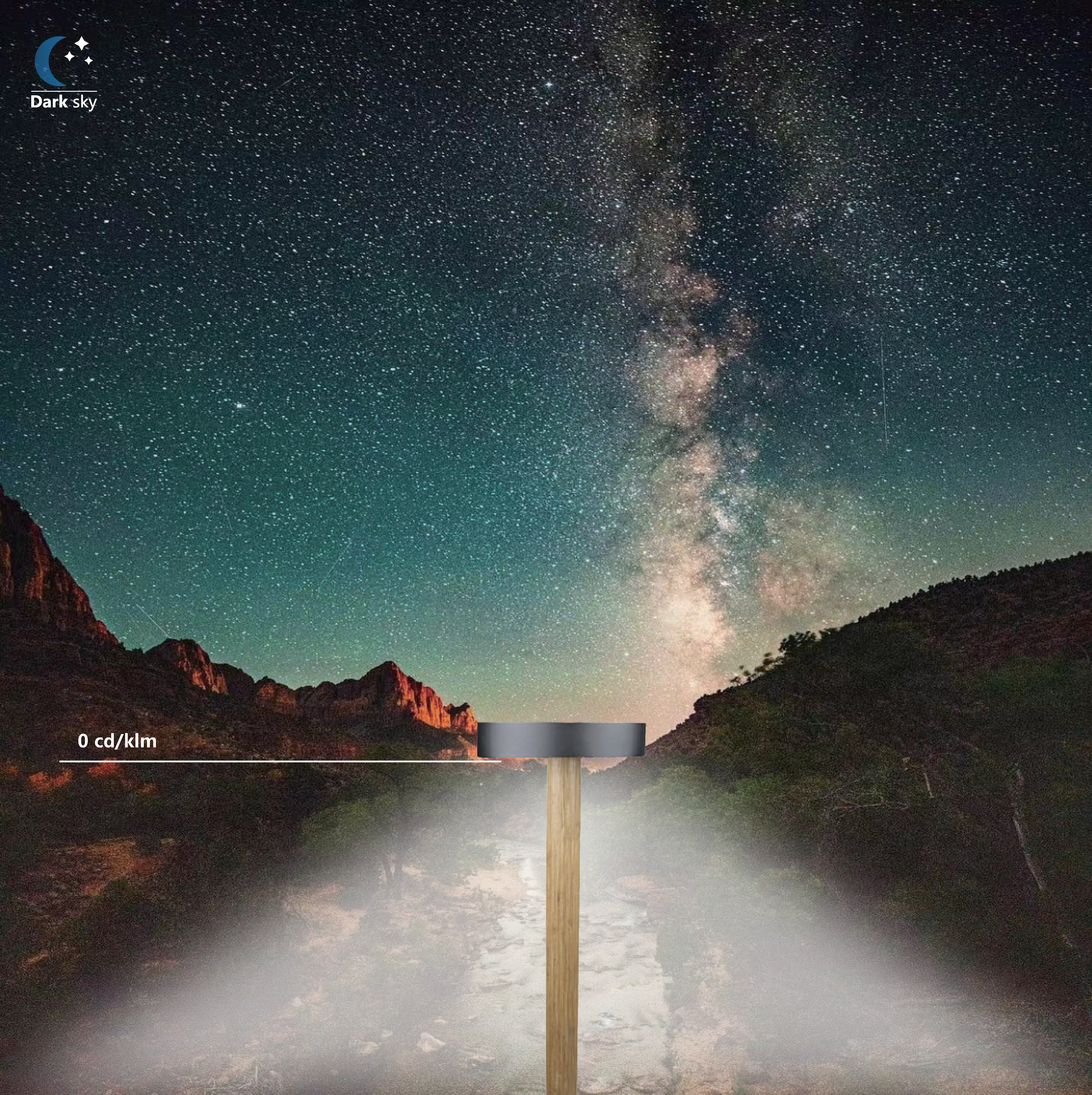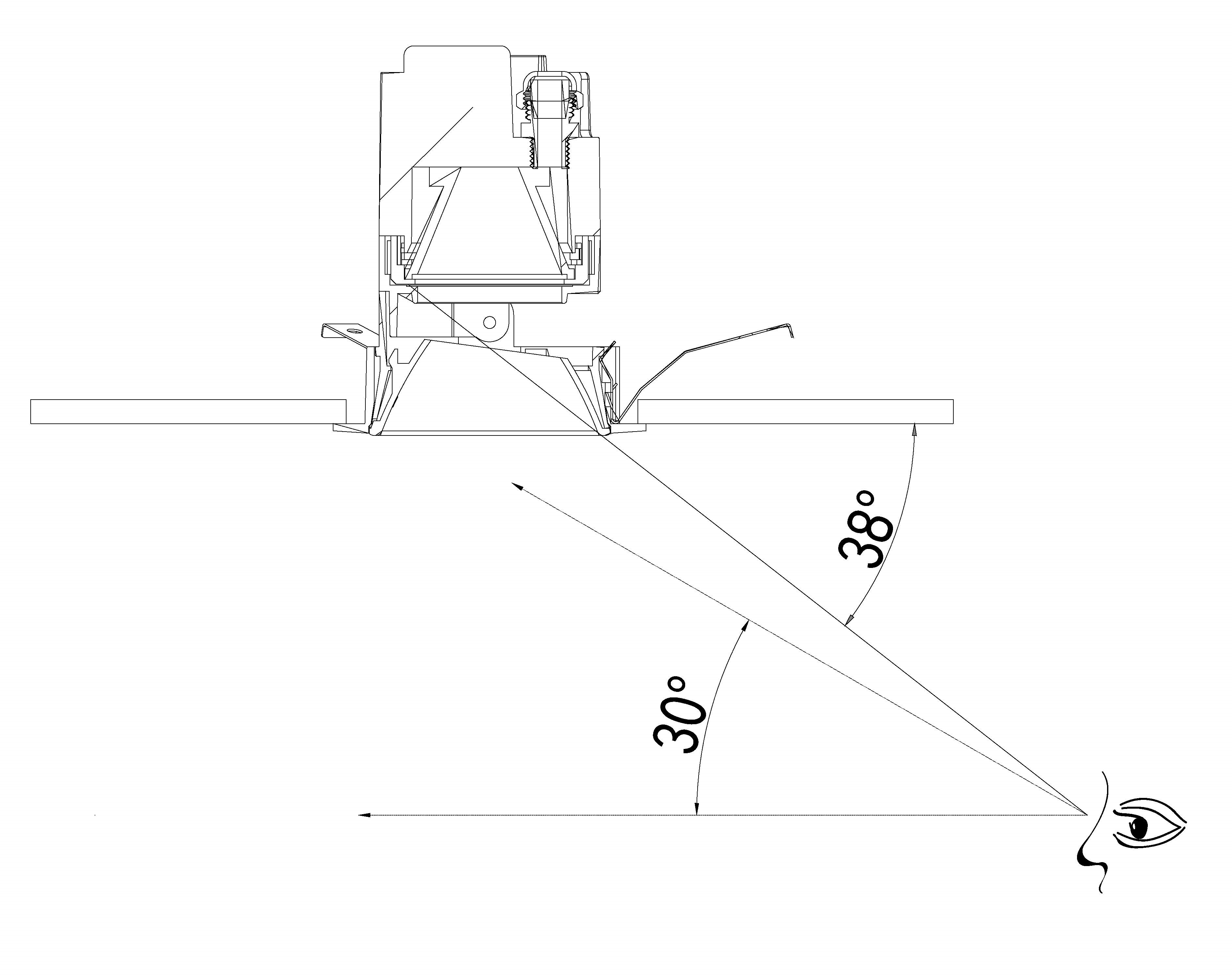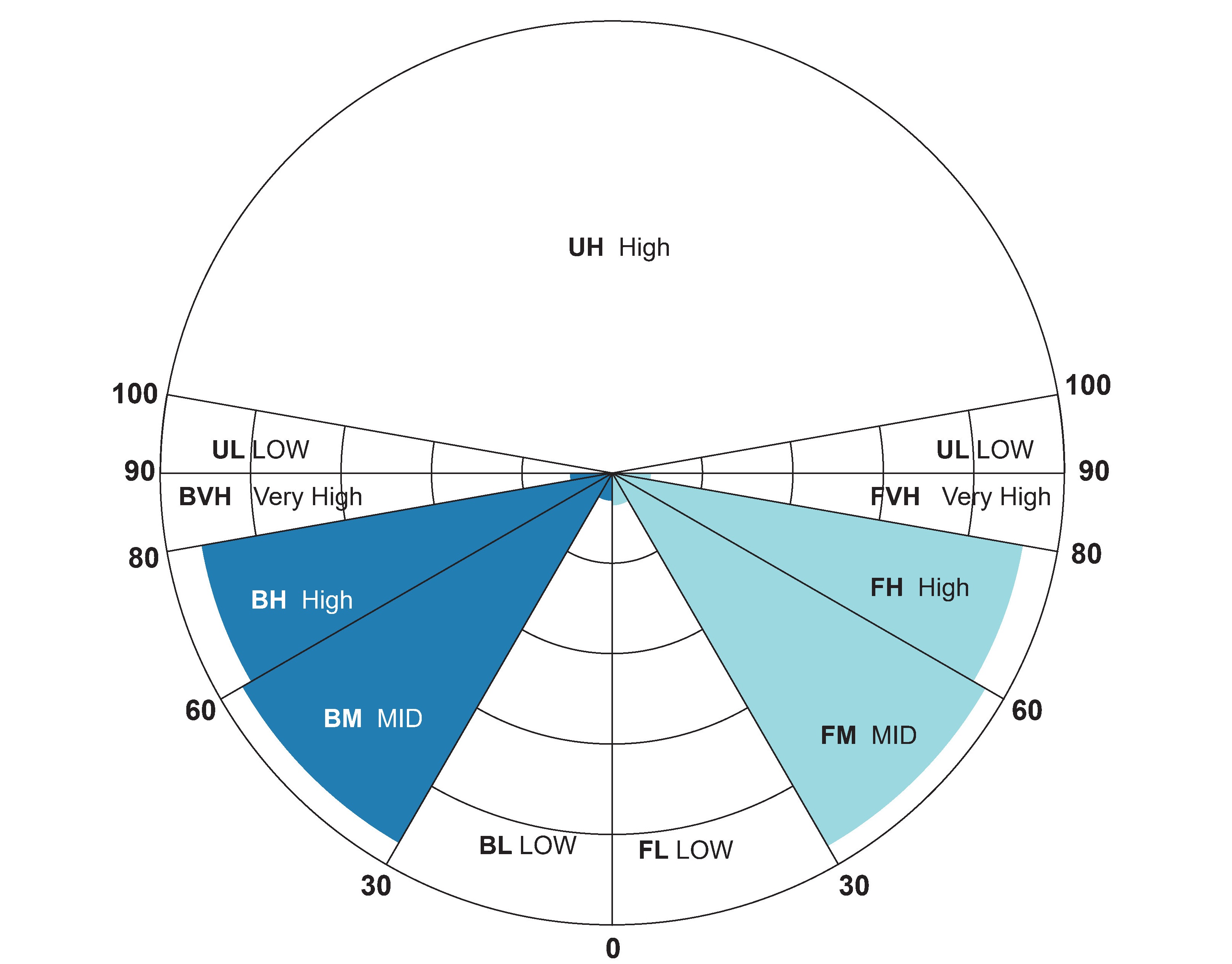What is a BUG rating?
What is a BUG rating?
A BUG (Backlight, Uplight, Glare) rating is a system used to measure the optical performance of outdoor light fixtures, classifying how much light is emitted in three directions: Backlight (behind the fixture), Uplight (towards the sky), and Glare (at high angles). Lower BUG ratings are more desirable for reducing light pollution and improving visibility, as they indicate less "stray light" that causes issues like light trespass and skyglow. The system is defined by the Illuminating Engineering Society (IES) and often enforced by the International Dark-Sky Association (IDA).
What each letter means
B - Backlight: Light emitted behind the fixture. This can cause light trespass, where light spills onto neighboring properties.
U - Uplight: Light directed upwards toward the sky, which is considered wasted light, causes skyglow, and blocks the view of stars.
G - Glare: Light emitted at high angles that can cause discomfort and reduce visibility for observers.
How it works
Measurement: The rating is based on the amount of light (measured in lumens) in specific zones for each component (B, U, and G).
Rating scale: Each category (Backlight, Uplight, Glare) receives a value, typically from 0 to 5, with lower numbers indicating less light in that direction.
Example: A fixture with a B2-U1-G2 rating has low levels of backlight, uplight, and glare.
Why it's important
Reduces light pollution: By measuring stray light, BUG ratings help identify fixtures that contribute to light pollution and negatively impact the night sky.
Improves visibility: Less glare and trespass make it easier for people to see and navigate, especially in residential and sensitive areas.
Increases efficiency: Directing more light where it's needed, and less light where it's not, can improve the efficiency of lighting projects.
What is a BUG rating?
B refers to the light behind the fixture, U refers to the light above the fixture, and glare is the amount of light emitted by the fixture at high angles.
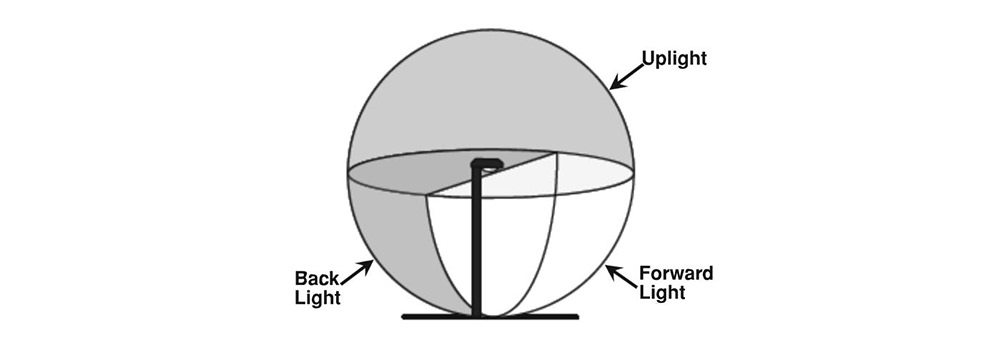
For outdoor lights, the backlight of the luminaire will shine into the adjacent house and become a source of light trespass. Artificial daylight is a major form of light pollution. The uplight of the luminaire will increase the artificial daylight. Glare is the annoyance and loss of visibility caused by the brightness exceeding the range that the human eye can adapt to. The glare of the luminaire will have a negative effect on outdoor people.
Then we can know that the light represented by BUG is generated by deviating from the lighting purpose. So in a specific scene, the lower the better.
How to define the BUG level?
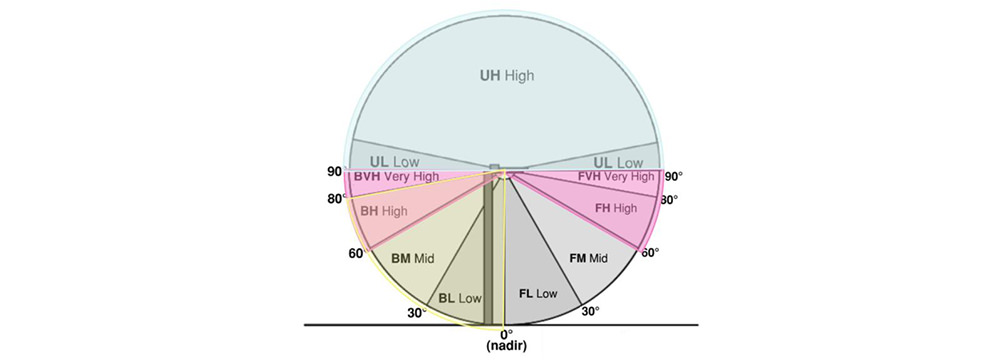
Zones
Backlight Sub-Zones
- BVH: Backlight Very High (80-90 degrees)
- BH: Back light High (60-80 degrees)
- BM: Back light Mid (30-60 degrees)
- BL: Back light Low (0-30 degrees)
Uplight Sub-Zones
- UH: Uplight High (100-180 degrees)
- UL: Uplight Low (90-100 degrees)
Glare (Front Light) Sub-Zones
- FVH: Forward light Very High (80-90 degrees)
- FH: Forward light High (60-80 degrees)
- FM: Forward light Mid (30-60 degrees)
- FL: Forward light Low (0-30 degrees)
Calculating the BUGs Rating: Example from IDA
The Backlight Rating (B0-5) is the highest B value from the zones Backlight High (BH), Backlight Mid (BM), and Backlight Low (BL). The chart below shows the maximum zonal lumens for each rating. For example, a light with 136 lumens in zone BH would have a B1 rating for that sub-zone. If it had 930 lumen output in zone BM and 985 lumen output in zone BL, the overall backlight rating would be B2 since that is the highest backlight value of the sub-zones.
Backlight Ratings (maximum zonal lumens)
Subzone | B0 | B1 | B2 | B3 | B4 | B5 | |
| Backlight/Trespass | BH | 110 lm | 500 lm | 1000 lm | 2500 lm | 5000 lm | >5000 lm |
| BM | 220 lm | 1000 lm | 2500 lm | 5000 lm | 8500 lm | >8500 lm | |
| BL | 110 lm | 500 lm | 1000 lm | 2500 lm | 5000 lm | >5000 lm | |
Figure 1
The Uplight Rating (U0-5) is the highest U value from the zones Uplight High (UH) and Uplight Low (UL). The chart below shows the maximum zonal lumens for each rating. The example is a 250-watt metal halide area luminaire, Type IV optical distribution. The bulb is housed in a covered box, so there is 0 light escaping in the UH and UL zones, meaning our example fixture has a U rating of U0. If there was light emitted in the zones, the U rating would be calculated using the table below.
Uplight Ratings (maximum zonal lumens)
Secondary Solid Angle | U0 | U1 | U2 | U3 | U4 | U5 | |
| Uplight/Skyglow | UH | 0 lm | 10 lm | 50 lm | 500 lm | 1000 lm | >1000 lm |
| UL | 0 lm | 10 lm | 50 lm | 500 lm | 1000 lm | >1000 lm | |
Figure 2
The Glare Rating (G0-5) is where it gets a little complicated, since both Frontlight (Glare) and Backlight sub-zones are factored into the Glare rating. Glare is the highest G value from the zones Forward light Very High (FVH), Backlight Very High (BVH), Forward light High (FH) and Backlight High (BH). The chart below shows the maximum zonal lumens for each rating. For example, a light with the following values, FVH:G1, BVH: G1, FH:G2, and BH:G0, would have an overall Glare Rating of G2 since that is the highest Glare value of the sub-zones.
Glare Rating for Asymmetrical Luminaire Types (Type I, Type II, Type III, Type IV)
Secondary Solid Angle | G0 | G1 | G2 | G3 | G4 | G5 | |
Glare/Offensive Light | FVH | 10 lm | 100 lm | 225 lm | 500 lm | 750 lm | >750 lm |
BVH | 10 lm | 100 lm | 225 lm | 500 lm | 750 lm | >750 lm | |
FH | 660 lm | 1800 lm | 5000 lm | 7500 lm | 12000 lm | >12000 lm | |
BH | 110 lm | 500 lm | 1000 lm | 2500 lm | 5000 lm | >5000 lm | |
Figure 3
Glare Rating for Quadrilateral Symmetrical Luminaire Types (Type V, Type VS)
Secondary Solid Angle | G0 | G1 | G2 | G3 | G4 | G5 | |
Glare/Offensive Light | FVH | 10 lm | 100 lm | 225 lm | 500 lm | 750 lm | >750 lm |
BVH | 10 lm | 100 lm | 225 lm | 500 lm | 750 lm | >750 lm | |
FH | 660 lm | 1800 lm | 5000 lm | 7500 lm | 12000 lm | >12000 lm | |
BH | 660 lm | 1800 lm | 5000 lm | 7500 lm | 12000 lm | >12000 lm | |
Figure 4
Compiling the zonal readings, the BUG report would read as follows, giving the luminaire a BUG rating B2 U0 G2.
Section | Lumens | Value |
| Backlight | ||
| BH: (60-80 degrees) | 136 | B1 |
| BM: (30-60 degrees) | 930 | B1 |
| BL: (0-30 degrees) | 985 | B2 |
| Uplight | ||
| UH: (100-100 degrees) | 0 | U0 |
| UL: (90-100 degrees) | 0 | U0 |
| Glare | ||
| FVH: (80-90 degrees) | 27 | G1 |
| FH: (60-80 degrees) | 3748 | G2 |
| BVH: (80-90 degrees) | 16 | G1 |
| BH: (60-80 degrees) | 136 | G0 |
Figure 5
